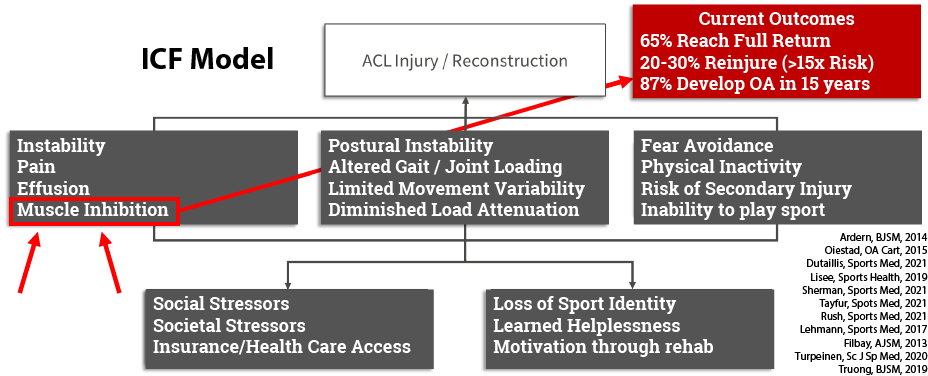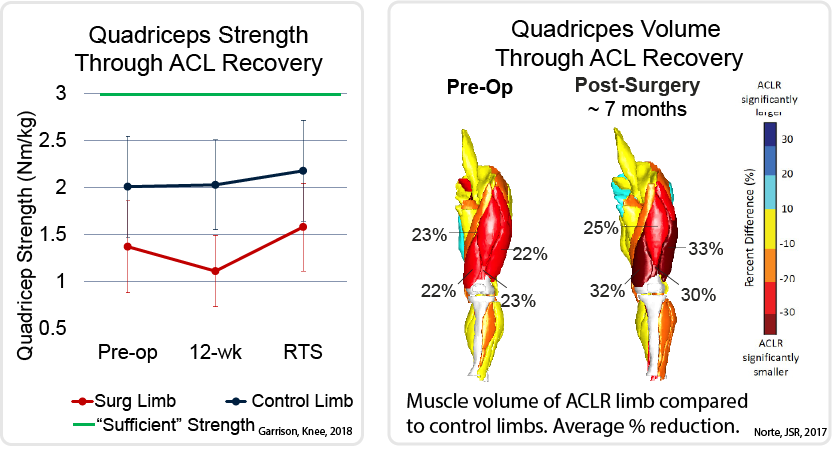The Quadriceps Problem
Quadriceps Strength and Poor Outcomes
The loss of a single ligament within the knee results in widespread and distributed impairments in body function, activity, and participation in daily life. Current treatments fail to restore full function with quadriceps muscle weakness being the most associated with poor long-term outcomes.
Quadriceps strength influences nearly everything:
Joint loading, gait mechanics, confidence & self-reported function, and ability to return to sport are just a few examples.
Weakness vs. Inhibition
You'll notice the ICF model says muscle inhibition, not weakness. And that is a key distinction.
Think about it: Why would the loss of a ligament in the knee cause the quadriceps muscle to get weak? At the time of the injury the quadriceps muscle tissue isn't directly effected, but we've all seen it: the muscle shrinks away in minutes.
The quad powers down, like the battery has been disconnected.
Here is the difference between weakness & inhibition:
- If you or I and our healthy neuromuscular system started an exercise program, you would see good results in as little as 6 to 8 weeks. A weak muscle gets strong quickly.
- Yet, as someone with ACL injury completes rigorous rehabilitation, the quadriceps do not respond in terms of strength or volume. An inhibited muscle cannot fully activate, so exercise alone is ineffective at stimulating muscle fiber adaptations.
Exercise Alone Is Not Enough
Joint-to-muscle inhibition was first described 100 years ago! (Harding, Lancet, 1925). Since then, we’ve learned that muscle function depends on neural input. In joint injury, pain, swelling, and joint distention send alert signals to the spinal cord, which causes an ongoing reflex inhibition of the muscles surrounding the joint now called: Arthrogenic Muscle Inhibition (AMI).
Early on after injury (and again after surgery) the inhibition in the spinal cord makes it impossible to fully contract the inhibited muscle voluntarily. Through rehab, the muscle fails to respond. When we measure this spinal-reflexive inhibition in the lab, it maps very closely to loss of strength.



